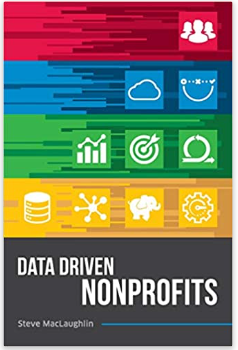Data Driven Nonprofits is billed as a guidebook for nonprofit organizations that want to use data more efficiently in order to make smarter organizational decisions about what they should be doing and where they should be going. Steve MacLaughlin is Vice President of Data & Analytics at Blackbaud and he has over 20 years of experience in the field, so he knows his stuff. More importantly, perhaps, is that he knows a lot of people and has probably worked with hundreds of organizations so he’s able to pinpoint his message and accurately speak to the concerns and challenges that many nonprofits are facing today. So is Data Driven Nonprofits worth your time and money?
Continue readingTwo Ways of Counting Nonprofit Gifts

Working in a nonprofit environment is a lot like working in a public or private company: you have to work hard to make a difference, you have to make sure your customers are happy, and you have to always keep an eye on the bottom line. But when it comes to finances, the two types of organizations can differ wildly. Sure, most larger nonprofit organizations are like private companies in how they run their accounting departments and keep their financial records, but nonprofits have the added responsibility of tracking and recognizing giving from their donors.
There are two general ways you can count and total up gifts to a fundraising organization: you can count the total funds Received or you can count the total funds someone has Committed to your organization.
Continue readingConstituent Databases 101: Family Records and Householding

What’s the best way to store family and household information on your constituents in your nonprofit database? Constituent data, especially personal data pertaining to prospects, donors, patrons and friends is often stored differently in an advancement database than it might be in a typical for-profit business customer database.
Most small companies keep records for customers as completely single entities. There is usually very little effort to recognize family members or spouses living at the same home address because it isn’t all that necessary. This makes sense in most cases because customers often make purchases as individuals, not as couples or families.
But for non-profits, this can lead to wasted mailings and annoyed donors.
Continue readingChoosing the Right Fundraising Database

When asked what the most important difference is between a successful fundraising organization and an unsuccessful one, most people would probably guess it has something to do with crafting the right message, knowing the right donors or simply having the best staff. But I would argue that there’s something much more fundamental that could make the biggest difference in the long term success of any nonprofit organization. Even if you have a great group of people working for you, wonderful prospects and a popular cause you’re promoting, you and your organization will never meet your full potential unless you have a quality fundraising database (with equally high quality data) to keep your organization strong through the inevitable turnover of staff, leadership and even donors.
Continue readingWhat is Advancement Services
If you’ve ever worked in any nonprofit or fundraising organization of a certain size you’ve probably encountered a department called “Advancement Services” or “Institutional Operations.” And while you might know what the “Human Resources” or “Information Management” departments do within an organization, there is often a little bit of a mystery around the vague name and nebulous job responsibilities of the Advancement Services department. So what, exactly, is Advancement Services?
Continue reading